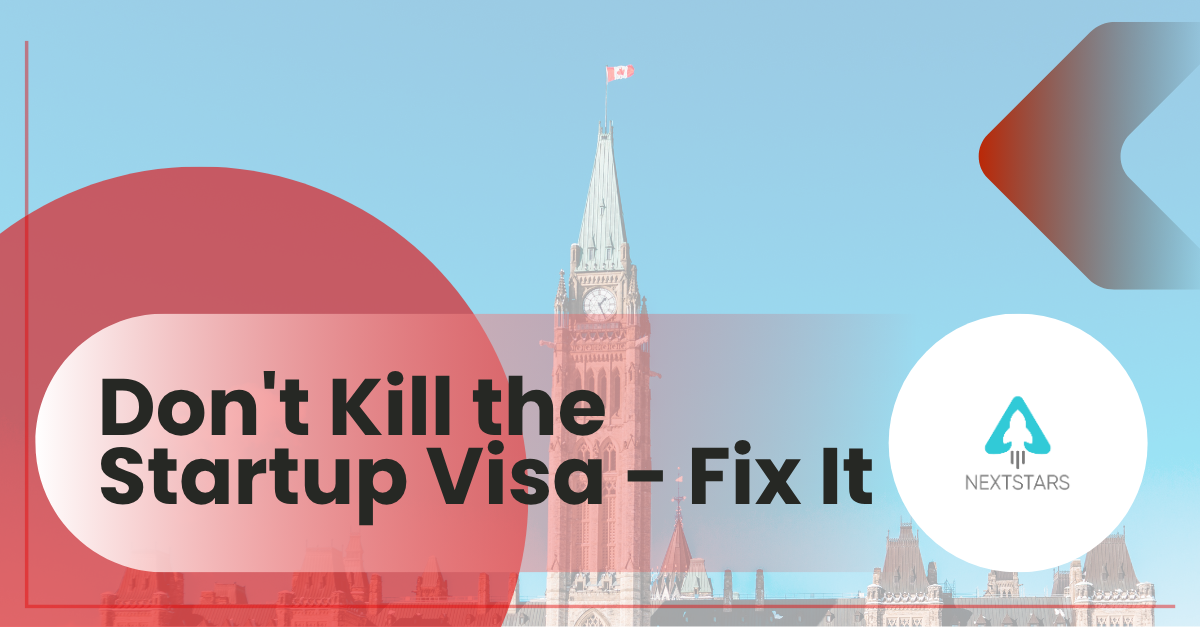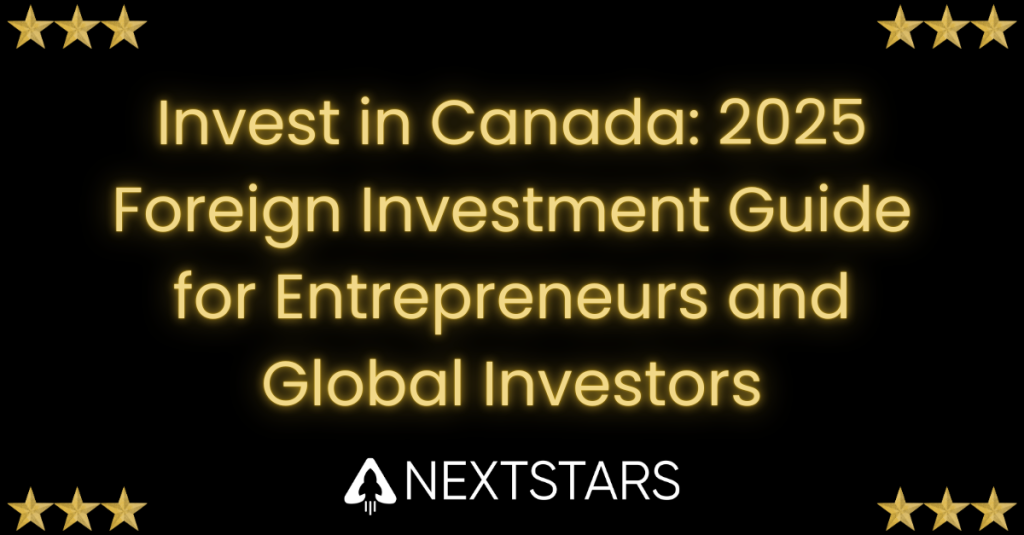Saeed Zeinali is the Founder and CEO of NextStars, a Toronto-based multinational advisory platform that has helped over 200 startups scale globally. As an immigrant entrepreneur himself, Saeed founded and successfully exited TranQool, Canada’s leading online mental health platform, to HumanaCare, an experience that gave him deep insight into Canada’s startup ecosystem. Through NextStars, he has spent years working directly with entrepreneurs navigating Canada’s business immigration pathways, providing business development, funding support, and immigration guidance. He has served in advisory roles at NEXT Canada and MTA, and currently advises the United Nations’ CTCN Climate Network on climate technology. Saeed has also hosted thought leadership conversations with industry leaders including Stephen Green, KPMG, and others to promote diverse entrepreneurship in Canada. His recent Financial Post article co-authored with Rick Spence, “Re-engineering the Startup Visa,” sparked national conversation about reforming the program to better serve Canada’s economic interests.
The Problem: A Broken System
When Stephen Harper’s government launched the Startup Visa Program in 2013, it was designed to be world-class, attracting experienced entrepreneurs ready to build scalable businesses in Canada. Based on Chile’s successful Start-Up Chile model, the program offered permanent residency combined with professional support from designated accelerators, incubators, and venture capital funds.
Canada is a nation of immigrants, and newcomers have always been entrepreneurial; foreign-born Canadians start businesses at a rate nearly 50 per cent higher than those born in Canada. Immigrant entrepreneurs create more jobs, export more goods and services, develop more intellectual property and invest more in R&D. The Startup Visa aimed to make Canada even more competitive by attracting the best of this global talent pool.
But the program has been ground down by bureaucracy, uncertainty, absurdly long processing times (now 10+ years in many cases) and rampant abuse. Three critical failures have emerged:
Weak Companies: The program attracts too many applicants with little business experience who create ventures designed primarily to secure immigration status rather than build genuine businesses. With no accountability for outcomes, many quietly dissolve once permanent residency is obtained. The incentive is backwards. For many applicants, the real product isn’t the business, it’s the visa.
Abuse: Dubious consultants and some designated entities have turned merit-based immigration into a transactional business. Some organizations prioritized volume and fees over quality. The government’s response, slashing annual intake and put a cap of 10 letter of support per year as of April 2024. Many think that this measure has not dealt with the underlying issue.
Unconscionable Wait Times: Processing times have ballooned to over a decade, a timeline that defies the very concept of a “startup” visa. By the time applicants receive permanent residency, their business ideas are obsolete, teams have dispersed, and competitive advantages have evaporated. Top-tier founders choose faster options elsewhere. The US, UK, Singapore, and Estonia process entrepreneurial visas in weeks or months. Canada gets left with applicants who have extraordinary patience or limited alternatives.
The real bottleneck may not be only processing capacity. It’s that immigration officers are being asked to evaluate business viability when they’re trained in immigration compliance. When a significant portion of applications represent ventures designed primarily for immigration rather than genuine commercial success, officers spend their time investigating fraud instead of processing legitimate files. The system is clogged not by volume alone, but by the wrong kind of volume. Applications that should never have reached IRCC in the first place.
The Solution: Three Pillars
Canada doesn’t need to abandon the Startup Visa. We need to fix it. Here’s a practical three-pillar approach that clears the backlog while creating sustainable pathways forward:
Pillar 1: Clear the Backlog
Send a standardized questionnaire to every file in the backlog. Give applicants 30 days to provide detailed updates: current team composition, revenue metrics, product milestones, customer traction, capital raised, and plans for the next 12-24 months.
Forward these responses to the original Designated Organization that issued their Letter of Support. Ask one question: “Based on this updated information, would you issue a Letter of Support to this venture today?”
This immediately eliminates dormant files. Many applicants have moved on to other countries, pivoted to different businesses, or lost interest after years of waiting. It forces designated entities to take responsibility for their original endorsements. Organizations that issued letters too casually face an uncomfortable reckoning.
Files that receive withdrawn support or fail to respond within 30 days are closed. The remaining backlog becomes manageable and represents actual businesses worth processing. IRCC can focus on legitimate applications rather than investigating fraud.
Pillar 2: Filter for Quality Before Immigration Processing
The fundamental flaw is that business evaluation happens too late, after applications have entered the immigration pipeline. By then, IRCC officers must judge market viability and entrepreneurial capability for which they lack training.
Separate business evaluation from immigration processing entirely. Require all applicants to submit an Expression of Interest (EOI) through a standardized questionnaire covering business model, market opportunity, team credentials, traction to date, competitive landscape, and capital requirements.
De-identify these submissions and distribute them to a rotating panel of 100 qualified evaluators. Successful entrepreneurs, active investors, accelerator managers, and business professors. Pay them a nominal fee for evaluation. Each vote yes or no: Does this represent a genuine, scalable business opportunity?
Applicants who receive 60+ “yes” votes advance to formal interviews and KYC with a Designated Organization of their choice. Only after passing this rigorous screening, they receive a Letter of Support and enter the immigration pipeline.
This transforms the program’s economics. It introduces actual business judgment from qualified evaluators before applications reach IRCC. Designated entities work with pre-screened ventures rather than sorting through weak applications. IRCC receives files validated for business viability, allowing officers to focus on immigration compliance. The modest upfront evaluation cost saves far more in reduced investigation time and improved outcomes.
Pillar 3: Open the Program to Investors
The Startup Visa has always been limited by a narrow definition. Someone who must found and actively operate a new venture. This excludes experienced businesspeople who want to contribute to Canada’s ecosystem but don’t want to go through the startup grind again.
Expand eligibility to investors who deploy capital into existing Canadian ventures. A foreign investor who commits $150,000 CAD to a Canadian startup on standard SAFE terms becomes eligible for permanent residency, subject to strict criteria:
- Recipient company must have minimum 2 full-time employees at time of investment
- At least 1 year of operational history OR graduation from a recognized Canadian accelerator
- Growth to minimum 4 FTE within a reasonable timeframe post-investment
Additional safeguards prevent abuse: arms-length transactions verified by independent counsel (no investments in relatives’ companies), market-standard SAFE terms, independent auditing of FTE counts, and enhanced review if companies dissolve within 2 years.
This addresses Canada’s chronic shortage of early-stage capital while introducing real market discipline. Investors risk their own capital and only benefit if portfolio companies grow. They have every incentive for rigorous due diligence. The market becomes the filter, not bureaucracy. It also attracts experienced operators who bring international connections, market knowledge, and strategic advice beyond just capital.
The $150,000 threshold is substantial enough to require serious due diligence but accessible enough to attract meaningful volume. It aligns with typical seed check sizes in Canada’s ecosystem, ensuring immigrant capital integrates naturally.
Two Clear Pathways Forward
These three pillars create two distinct pathways:
Pathway 1: Genuine Entrepreneurs. Merit-based selection through crowd-sourced evaluation ensures only ventures with real commercial potential enter the system. Designated entities work with pre-screened applicants. IRCC processes files validated by business experts, not immigration officers playing venture capitalist.
Pathway 2: Active Investors. Experienced businesspeople invest capital and expertise in existing Canadian startups. Canadian startups get early-stage funding they desperately need. Investors undergo market-based validation. They either find genuinely promising companies worthy of their capital, or they don’t qualify.
By clearing the backlog, establishing rigorous pre-screening, and opening investment pathways, we transform the program from a processing nightmare into a strategic tool for economic growth. Processing times compress when applications are legitimate rather than requiring extensive fraud investigation. Quality improves when selection happens through business evaluation by business experts.
This isn’t about lowering standards. It’s about raising them while making the system work. Canada’s competitors aren’t waiting. Countries from Estonia to Singapore are aggressively courting the same global talent with streamlined processes and clear value propositions.
The current government has an opportunity to turn a failed program into a cornerstone of economic strategy. The question is whether they have the vision to implement real reform rather than tinkering with intake numbers while underlying problems persist.
We can reclaim our position as a destination of choice for entrepreneurs and investors. But only if we fix what’s broken.





